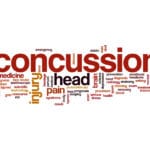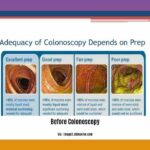This comprehensive guide explores the pronator drift test, a simple yet powerful neurological assessment tool. We’ll delve into its purpose, procedure, interpretation, clinical significance, limitations, and future research directions.
Decoding the Pronator Drift: What It Reveals
The pronator drift test, also known as Barre’s sign or pyramidal drift, is a sensitive neurological exam revealing subtle upper motor neuron lesions often missed by routine examinations. It helps healthcare professionals identify subtle muscle weakness in the arms, which can indicate potential disruptions in the brain-to-muscle communication pathway (corticospinal tract). Think of it as a sneak peek into the intricate communication between your brain and your arm muscles.
How the Test Works: A Step-by-Step Guide
The pronator drift test is remarkably simple to perform, requiring no specialized equipment. Here’s how it typically unfolds:
-
Preparation: The patient sits or stands comfortably, ensuring balance and relaxation.
-
Arms Extended: The patient extends both arms forward horizontally at shoulder height, palms facing upwards (supination), with fingers spread apart.
-
Eyes Closed: The patient closes their eyes. This crucial step removes visual input, forcing the brain to rely on proprioception (the body’s internal sense of position) to maintain arm position. This magnification of subtle weaknesses wouldn’t be as apparent with the eyes open.
-
Hold and Observe: The patient holds this position for 20-30 seconds while the healthcare professional observes for any involuntary movements.
-
Assessment: The examiner watches closely for several specific movements:
- Downward Drift: Do the arms drift downwards?
- Pronation: Do the palms turn inwards (towards the floor)?
- Outward/Upward Drift (Cerebellar Drift): Does the arm drift outward or upward?
- “Updrift”: Does the arm rise involuntarily overhead, often without the patient’s awareness? This can be a sign of specific cortical lesions.
- Gentle Tap Test (Optional): The healthcare professional might gently tap the patient’s arms during the test. This helps to determine how well they can maintain their position against a slight external force. This assesses strength and how well motor commands are working.
Interpreting the Results
Interpreting the pronator drift test involves considering the specific movements observed with eyes both open and closed.
-
Negative Result: If the arms remain steady, palms up, with minimal or no drift or pronation, the result is considered negative. This suggests normal muscle strength and neurological function.
-
Positive Result: Any involuntary pronation, downward drift, cerebellar drift or “updrift” is considered a positive result and suggests weakness, potentially indicating a neurological issue. Remember, different drift patterns can provide clues about the underlying cause:
- Eyes Open: Drift primarily suggests a motor deficit (muscle weakness).
- Eyes Closed: Drift suggests a sensory deficit (proprioceptive loss).
- Outward/Upward Drift: Suggests a cerebellar issue involving coordination.
- “Updrift”: Suggests a specific cortical lesion.
Clinical Significance: What a Positive Test Might Indicate
A positive pronator drift test isn’t a diagnosis in itself but a valuable clue. A positive pronator drift test can indicate various underlying conditions, from stroke and multiple sclerosis to metabolic disorders and nerve damage. It could suggest several underlying neurological conditions, such as:
- Stroke: Disrupted blood flow to the brain affecting motor control. A downward drift with pronation suggests a stroke on the opposite side of the brain.
- Multiple Sclerosis (MS): Damage to the nervous system affecting muscle control and coordination.
- Brain Tumors: Pressure on specific brain areas impacting motor function.
- Cerebral Palsy: A group of disorders affecting movement, muscle tone, and posture.
- Peripheral Neuropathy: Damage to the peripheral nerves, sometimes causing weakness.
- Inborn Errors of Metabolism: Rare genetic conditions sometimes affecting neurological development.
- Other Conditions: A variety of other conditions affecting the nervous system can also lead to a positive pronator drift, requiring further investigation.
A patient may also exhibit language difficulties, such as using nonsensical words or struggling with word pronunciation or sentence formation. These symptoms may benefit from melodic intonation therapy. Additionally, morphemic analysis, the study of the smallest units of meaning in language, can help identify and address these communication challenges.
Limitations: It’s Not Foolproof
While incredibly useful, the pronator drift test has some limitations.
- Subjectivity: Interpretation can be subjective, relying on the examiner’s experience.
- Patient Cooperation: Requires patient cooperation and correct positioning for accurate results. Factors like fatigue, pain, or anxiety can influence the results.
- Nonspecific: It’s not specific to a single neurological condition. A positive result simply suggests a need for further investigation.
Tips for More Accurate Results
- Clear Instructions: Ensure the patient understands what to do. Clear, concise instructions can significantly improve accuracy.
- Proper Positioning: Correct arm positioning is crucial. The examiner should ensure proper positioning and remind the patient to maintain it.
- Keen Observation: The examiner needs to be observant, watching for even the slightest movements.
- Consider External Factors: Be mindful of factors that might influence the results, such as fatigue, medication use, or anxiety, and interpret the findings accordingly.
Looking Ahead: Future Research and Insights
Ongoing research aims to refine our understanding and application of the pronator drift test. Some areas of active study include:
- Quantification: Researchers are exploring ways to quantify the degree of pronation or drift for more precise diagnoses.
- Adaptation: Studies are looking at adapting the test for different age groups, such as children.
- Comparative Analysis: Comparing the pronator drift test with other neurological assessments could provide a more complete understanding of corticospinal tract function.
It’s important to remember that medical knowledge is constantly evolving. What we know today may change with future research, especially in the complex field of neurology.
Pronator Drift, Stroke, and Other Neurological Conditions
While a positive pronator drift can suggest a stroke, it’s essential to understand that it’s not a definitive diagnosis in isolation. Many other conditions can cause a positive pronator drift, making further investigation crucial.
The connection between pronator drift and stroke lies in their shared association with upper motor neuron lesions. Stroke can disrupt the brain’s blood supply, potentially damaging upper motor neurons and leading to the muscle weakness detected by the pronator drift test. However, other conditions like MS, brain tumors, and nerve injuries can also affect these pathways, resulting in a similar presentation.
Therefore, a doctor will always consider other factors like medical history, symptoms, and further neurological assessments before reaching a diagnosis. This might include imaging studies like MRI or CT scans to provide a more detailed view of the brain and nervous system.
Why Closing Your Eyes Is Crucial during the Pronator Drift Test
Closing your eyes during the pronator drift test is essential because it removes your ability to visually compensate for any weakness, making the drift more apparent. When your eyes are open, your brain continuously receives visual feedback about your arm’s position, allowing for minor adjustments to maintain stability. Closing your eyes eliminates this visual crutch, forcing your brain to rely solely on proprioception to keep your arms in position.
This heightened reliance on proprioception makes even subtle weaknesses more noticeable. If a neurological issue affects the pathways responsible for proprioception (such as the posterior column pathway), the arms will likely drift or pronate when the eyes are closed, even if they appear steady with the eyes open. This highlights the importance of performing the pronator drift test with eyes both open and closed to differentiate between motor and sensory deficits.
By integrating these important points and expanding on the existing content, this article provides a more comprehensive, engaging, and informative resource on the pronator drift test. The revised structure improves flow, eliminates redundancy, and delivers key information effectively. The inclusion of cautious language, exploration of different perspectives, and acknowledgement of ongoing research aligns with best practices for medical writing.
- Unveiling the Enigma: Mansoureh Khojasteh Bagherzadeh’s Public Appearances & Private Life in Iran - July 18, 2025
- Unveiling the Mystery: Mansoureh Khojasteh Bagherzadeh’s Husband: A Rare Glimpse into a Private Life - July 18, 2025
- Unveiling Masoud Khamenei’s Mother: Power, Influence, and Iran’s Future - July 18, 2025
















